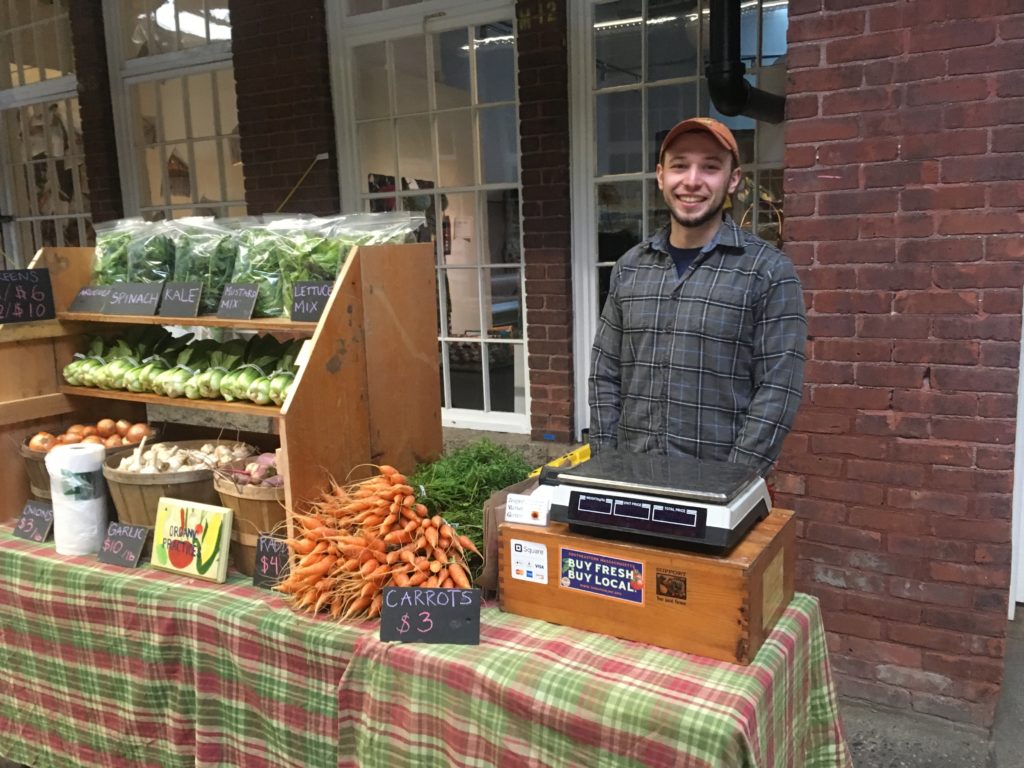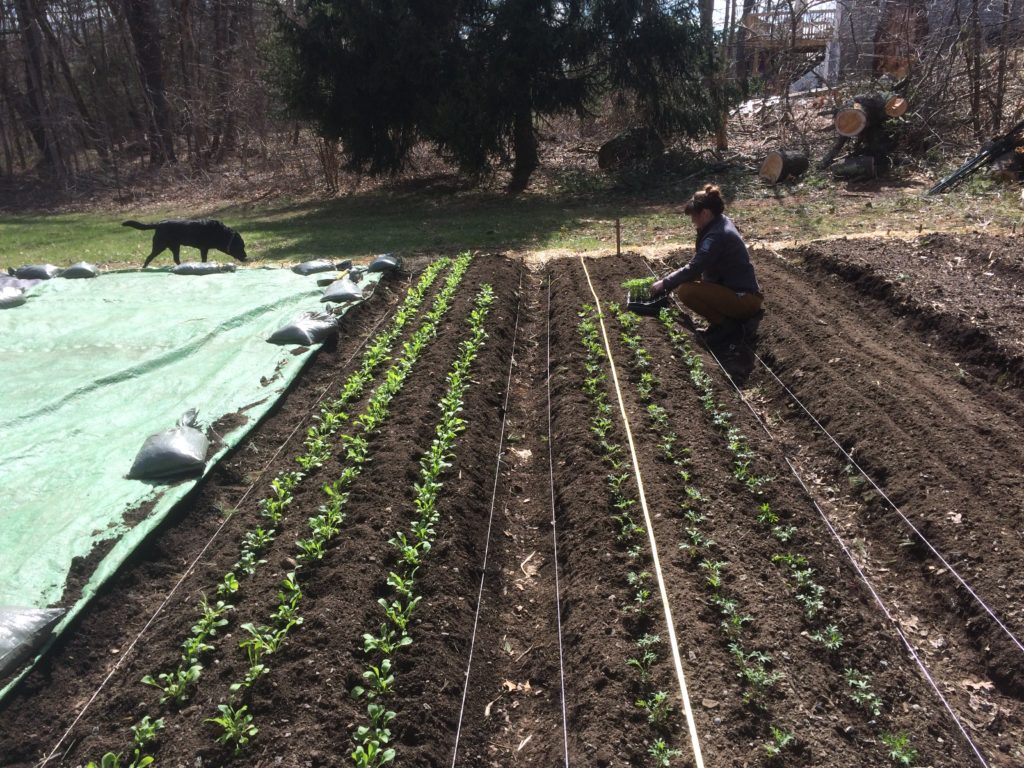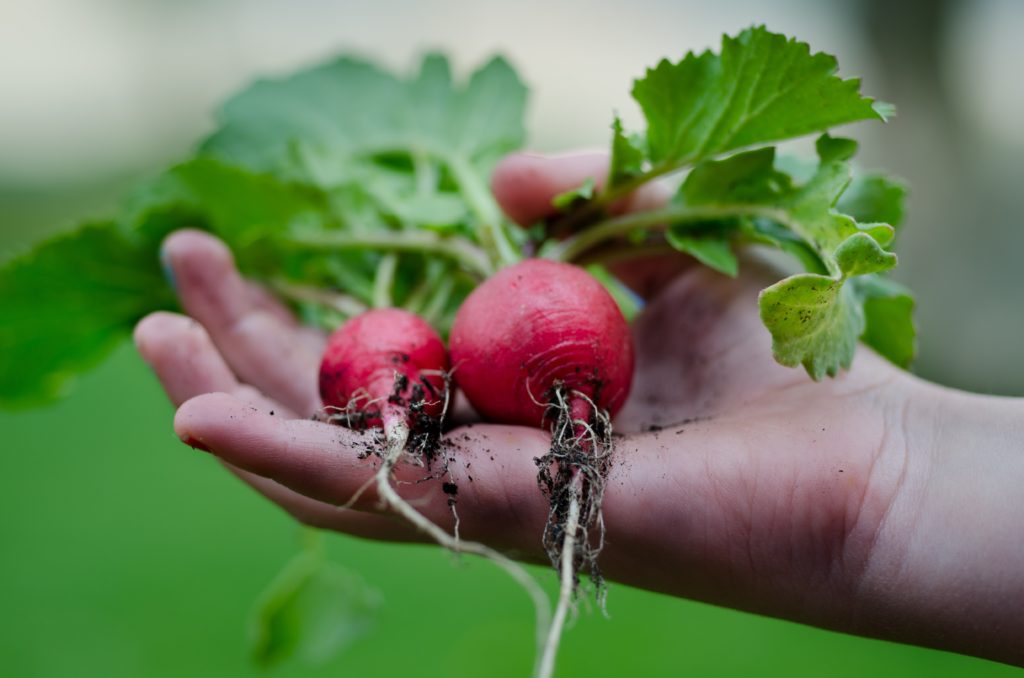How to start a market garden

Whether you are an aspiring full-time farmer or a homesteader looking to earn extra money, starting a market garden is a great way to begin selling your own produce for profit. Luckily, the steps involved in how to start a market garden are fairly simple and easy to follow for small scale growers.
No matter where you are starting from, here are the basic steps to starting your own market garden.
Step 1: Do your research
If you think a market garden might be right for you, experienced market gardeners suggest you consult the patron saints of market gardening and their respective Bibles: Jean-Martin Fortier, author of “The Market Gardener,” and Eliot Coleman, author of “The New Organic Grower” and owner of Four Season Farm in Harborside, Maine.
Since Coleman started his market garden in Maine in the late 1960s, he said market gardening — and the resources available — have grown.
“It’s amazingly popular,” Coleman chuckled. “There are a number of new young hotshots who have online programs you can purchase and subscribe to that will sort of lead you by the hand through a lot of the information you need to know.”
If you do not have professional farming experience, Zachary Zeigler, owner of Zeigler’s Market Garden in Norfolk, Massachusetts. also suggested working on another farm before you decide if you want your own.
“Before you jump into it, work on other farms,” he said. “A lot of people thought they wanted to farm and when you get down to it it’s actually not that fun. Before you decide to buy that broadfork, you got to test it out.”

Step 2: Start small (and don’t quit your day job)
No matter what your goals are for your market garden, experienced market farmers all agree that newcomers should start small. Maintain a prudent and frugal attitude throughout all the early steps of starting a market garden.
“I am a big advocate of slow and steady,” Zeigler said. “The best way is to manage funds well at the beginning. Start small”
In the same vein, make sure you have an additional source of income at the start of your market gardening journey.
“The first thing I tell people is don’t quit your day job,” Coleman laughed.
You can transition to more full-time farming as you gain experience and expand your customer base, but experienced market gardeners agree that having a part-time or full-time work in addition to your fledgling market garden is helpful in the early days.
Step 3: Buy or lease land
To start a market garden, the first thing you need is land, or access to land.
“You need to have some land, although there are some people that successfully borrow land in order to do it,” Coleman said.
Land can be a limiting factor in the long term, but at the outset, experts agree it is best to start small. Lease an acre of land or start producing on the land you have available before expanding production.
Step 4: Gather your tools
Even if you are excited about your new venture, Zeigler said to start market gardening conservatively to avoid financial pitfalls.
“You see a lot of times folks will go all-in — buy newest walk-behind tractor, newest feeder, newest everything — and they spend all their capital,” Zeigler said. “You could have one rough weather year and the market could be canceled for two weeks and you’re out of money.”
Most market gardens can be managed with simple, inexpensive tools.

“I first started in 1965 in New Hampshire and basically we were in the 19th century,” Coleman laughed. “There were no new tools. Nobody ever thought that that size and scale of vegetable production would continue once the big boys in California made everyone think that was the only way to do it.”
Coleman said that he still uses his old rototiller, but there are new methods available that require even less labor.
“A lot is being achieved either by spreading a sheet of clear plastic over large areas of soil to solarize the soil and kill weeds, or spreading a tarp over the soil [in a process called occultation],” Coleman said. “I often ponder if I knew about either of those techniques, I might not have even bothered getting the rototiller.”
In terms of tools, Coleman said the main challenge the Maine market gardeners face is winter.
“When we started in the late-60s and early-70s it was a little disappointing,” Coleman admitted. “Every September, we would turn this business we worked so hard to develop back over to the Californians for the next six to seven months because winter happened.”
“We kept experimenting around to see how much further in the fall we could go and how much earlier in the spring we could start,” Coleman said.
Now that there are tried and true practices for season extension, Coleman recommended that Mainers and other market gardeners in cold climates take advantage of them and continue experimenting on their own to find out what works best for them.
“Expanding our season from just our traditional New England warm months and doing it by pioneering ideas of growing in unheated greenhouses, by sticking to the crops like spinach and scallions that are very cold hardy, that’s one of the best steps we’ve made,” Coleman said. “I recommend that.”
Wolff said you can save money on gardening supplies by building your own infrastructure, like greenhouses and other season extenders.
“You don’t really have to sink that much money into a market garden,” said Adrienne Wolff, co-owner of Buckwheat’s Market Garden in Central Lake, Michigan. “You can home-make tools We’ve found that YouTube is one of our best friends as far as that.”
Step 5: Find a market
Finding a market to sell your crops is also an essential step to starting a market garden.
“Check around to see what your market is going to be,” Coleman said. “If you’re on a road and there are four other farm stands on your road, a farm stand is probably not going to be your best choice for marketing. You want to check and see what stores you might want to sell to.”
Coleman said there are a few surprising sources for markets, including local supermarkets.
“Not many of the local growers think of even selling there because they think, ‘Oh, supermarket — this is something that’s far too big,’” Coleman explained. “A lot of them are very committed to buying local food if they can find it.”
The market — and the most profitable crops to grow — will also depend on your location.
“Know where you’re living,” Coleman said. “Try to plan your cropping program to fit in with the reality of where you can sell it and who you can sell it to. If you’re way up in Northern Maine say you don’t want to specialize in arugula and mesclun because nobody up there is familiar with them. You want to specialize in Swiss chard, scallions and carrots.”
Step 6: Determine what you want to grow and sell
In the first few seasons, find out what you really enjoy growing.
“I think that when people start, they want to plant a million different things because they’re so excited,” Wolff said. “If you want to make something for profit, it’s good to first experiment and see what you enjoy growing.”
Those first few seasons of experimenting will help you determine what crops are best for you to grow to make money.
“We cut out some things that aren’t efficient for us, like peas and string beans,” Zeigler said. “The amount of labor it takes to harvest those doesn’t always balance out. We also don’t grow much corn. It takes up a lot of space in the garden and they can grow it a lot cheaper at bigger farms. We whittled down to what was selling most at the market, and threw fun things in, like tomatillos and husk cherries
Choosing what you enjoy growing will also help you brand your market garden’s specialties, which is essential to finding the most profitable markets where you are going to sell your produce.
“Figure out what kind of market garden you want to be,” Wolff said. “If you do want to sell for profit, I would grow things that you are proud to sell and plant things that can be planted or seeded close together so you’re using your space to its fullest potential.”

Step 7: Manage your expectations, but don’t get discouraged
No matter where you are, managing expectations is essential if you want to start a market garden. Zeigler said not compare yourself to others in the early days.
“The other thing we try to do is not compare ourselves to other farms or market gardens especially in the age of social media,” Zeigler said. “We find that if you just work hard and try not to overextend yourself you can actually make a pretty decent little profit off a market garden.”
Coleman said it may take a while to turn a profit on a market garden. Finding the work satisfying, he said, is the most important way to stay motivated in the early days.
“You don’t want to jump into it thinking it’s going to make you a fortune because it won’t,” Coleman said. “It’s hard work, but it’s satisfying work. I’ve never done anything I’ve found more satisfying than trying to grow the best possible most nutritious food for people.”
